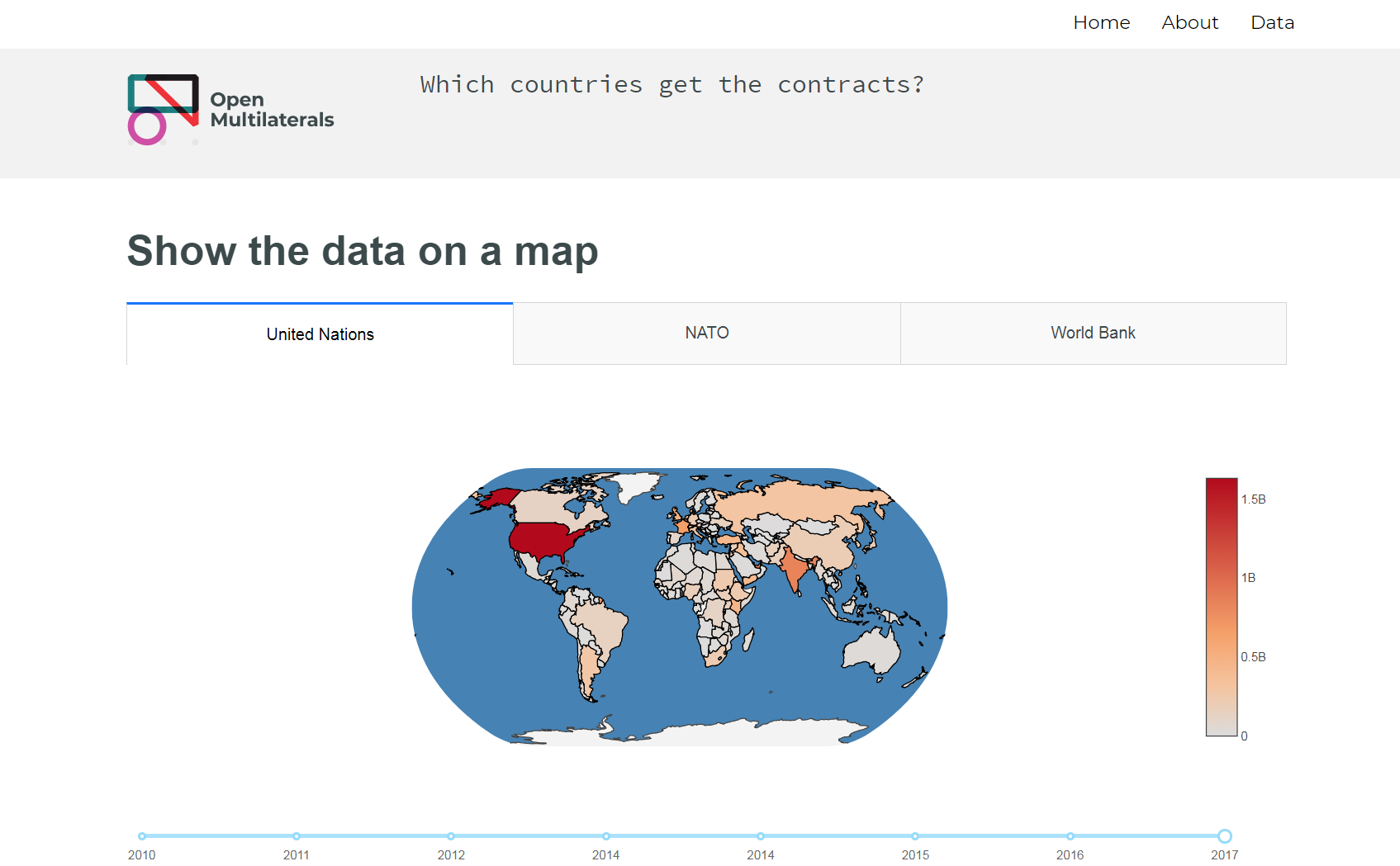Nearly 400,000 contracts from UN, World Bank and NATO made public
For the first time, it has become visible which countries benefit the most from multilateral organizations such as the United Nations, NATO and the World Bank. Remarkable cash flows have become public and available for research through the website OpenMultilaterals.org. Through this website, Hivos, Cordaid and the Open State Foundation have made nearly 400,000 contracts between multilateral organizations and companies visible and accessible to everyone.
Why is this important? Every year, many member states contribute billions to multilateral organizations such as the United Nations, the World Bank and NATO. This money goes towards procurement of goods ranging from medicine to larger infrastructural works. Until now, the contracts were made with companies were not transparent and not easily accessible. With the exception of the World Bank, multilateral organizations cover these contracts in PDF files.
Open Multilaterals
To gain insight into the public funds that are spent through multilateral organizations, Open State Foundation has extracted the data from PDF files, bundled and visualized the information via OpenMultilaterals.org. On this website, the data are shown on a world map and in various graphs and tables. The raw data are openly available for further analysis by, for example, journalists and researchers.
What can we find in the data?
The information shows that, for example, Dutch companies earned half a billion euros from UN contracts in 2017. The data also showed a notable loan for HIV/AIDS treatment in the Democratic Republic of Congo with the World Bank, procured through a Chinese company. The initiators are curious what other insights users can get from the data. How many contracts are won by a country and what does that means for business, what cash flows stand out? These are the kind of questions that users can now find the answers to.
Further development of the website
In the coming months, Hivos, Cordaid and Open State will be working on additional visualizations that provide more insight in the procurement contracts. The three organizations note that the multilaterals must make more information available. Currently multilateral organisations only provide an amount, the receiving party and a few key words about the type of project. To improve transparency, the multilaterals should share more information about the work done that the companies are competing for the contract, which companies are competing for, where they come from and what type of companies they are.





